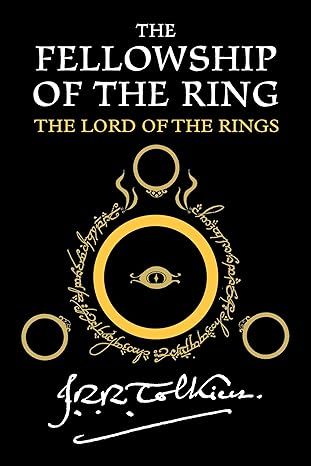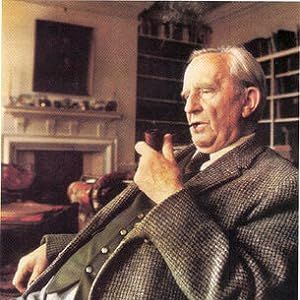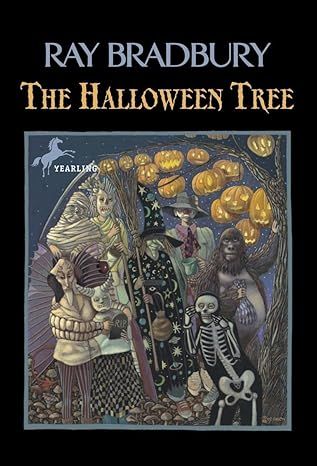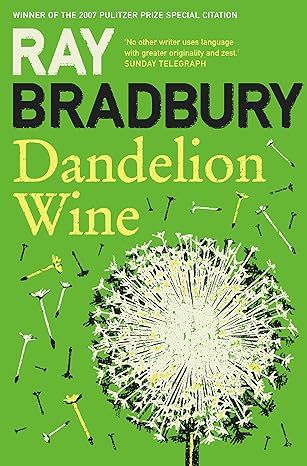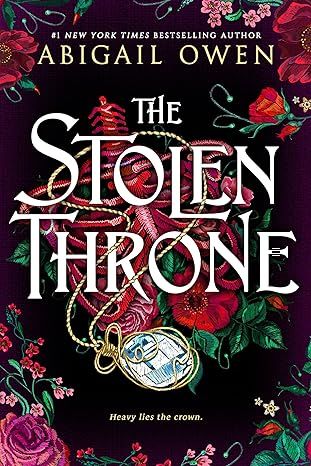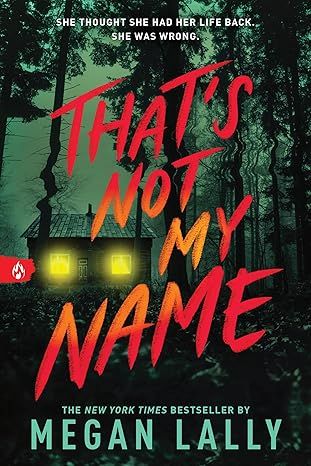The Fellowship Of The Ring: Being the First Part of The Lord of the Rings (The Lord of the Rings, 1)
4.8
-
22,514 ratings
The Fellowship of the Ring is the first volume in J.R.R. Tolkien's epic adventure tale, The Lord of the Rings.
One Ring to rule them all, One Ring to find them, One Ring to bring them all and in the darkness bind them.
In ancient times the Rings of Power were crafted by the Elven-smiths, and Sauron, the Dark Lord, forged the One Ring, filling it with his own power so that he could rule all others. But the One Ring was taken from him, and though he sought it throughout Middle-earth, it remained lost to him. After many ages it fell into the hands of Bilbo Baggins, as told in The Hobbit. In a sleepy village in the Shire, young Frodo Baggins finds himself faced with an immense task, as his elderly cousin Bilbo entrusts the Ring to his care. Frodo must leave his home and make a perilous journey across Middle-earth to the Cracks of Doom, there to destroy the Ring and foil the Dark Lord in his evil purpose.
“A unique, wholly realized other world, evoked from deep in the well of Time, massively detailed, absorbingly entertaining, profound in meaning.”—The New York Times
Kindle
$0.00
Available instantly
Audiobook
$0.00
with membership trial
Hardcover
$20.31
Paperback
$12.08
Ships from
Amazon.com
Payment
Secure transaction
ISBN-10
0547928211
ISBN-13
978-0547928210
Print length
432 pages
Language
English
Publisher
William Morrow Paperbacks
Publication date
September 17, 2012
Dimensions
6 x 1 x 8.5 inches
Item weight
15 ounces
Frequently bought together
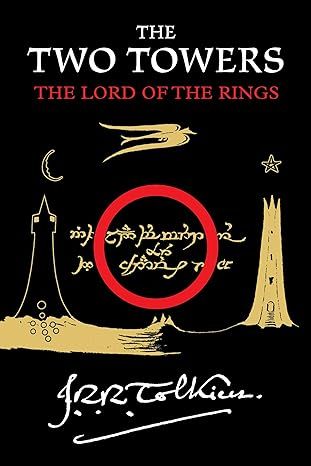
The Two Towers: Being the Second Part of The Lord of the Rings (The Lord of the Rings, 2)
4.8
-
13,625
$12.54
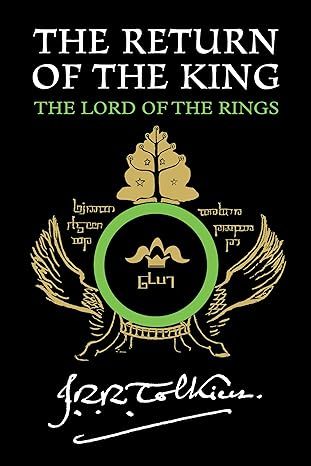
The Return of the King: Being the Third Part of the Lord of the Rings (The Lord of the Rings, 3)
4.9
-
10,910
$11.13
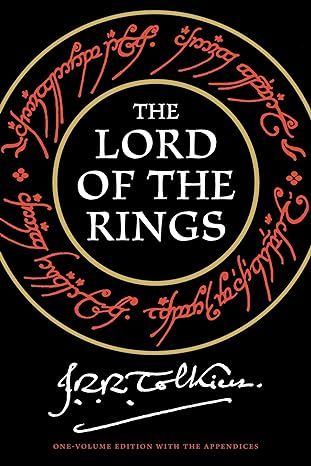
The Lord Of The Rings
4.8
-
3,795
$12.49

J.R.R. Tolkien 4-Book Boxed Set: The Hobbit and The Lord of the Rings
4.8
-
21,709
$20.77
Popular highlights in this book
I don’t know half of you half as well as I should like; and I like less than half of you half as well as you deserve.
Highlighted by 7,269 Kindle readers
One Ring to rule them all, One Ring to find them, One Ring to bring them all and in the darkness bind them.
Highlighted by 6,003 Kindle readers
‘Courage is found in unlikely places,’ said Gildor. ‘Be of good hope!
Highlighted by 4,284 Kindle readers
Product details
ASIN :
B007978NPG
File size :
6121 KB
Text-to-speech :
Enabled
Screen reader :
Supported
Enhanced typesetting :
Enabled
X-Ray :
Enabled
Word wise :
Enabled
Editorial reviews
"Here are beauties which pierce like swords or burn like cold iron." -- C.S. Lewis
"Destined to outlast our time." The New York Herald-Tribune
"Exciting... Mr. Tolkien's invention is unflagging" -- W.H. Auden —
Sample
Chapter 1
A Long-expected Party
When Mr. Bilbo Baggins of Bag End announced that he would shortly be celebrating his eleventy-first birthday with a party of special magnificence, there was much talk and excitement in Hobbiton.
Bilbo was very rich and very peculiar, and had been the wonder of the Shire for sixty years, ever since his remarkable disappearance and unexpected return. The riches he had brought back from his travels had now become a local legend, and it was popularly believed, whatever the old folk might say, that the Hill at Bag End was full of tunnels stuffed with treasure. And if that was not enough for fame, there was also his prolonged vigour to marvel at. Time wore on, but it seemed to have little effect on Mr. Baggins. At ninety he was much the same as at fifty. At ninety-nine they began to call him well-preserved; but unchanged would have been nearer the mark. There were some that shook their heads and thought this was too much of a good thing; it seemed unfair that anyone should possess (apparently) perpetual youth as well as (reputedly) inexhaustible wealth.
‘It will have to be paid for,’ they said. ‘It isn’t natural, and trouble will come of it!’
But so far trouble had not come; and as Mr. Baggins was generous with his money, most people were willing to forgive him his oddities and his good fortune. He remained on visiting terms with his relatives (except, of course, the Sackville-Bagginses), and he had many devoted admirers among the hobbits of poor and unimportant families. But he had no close friends, until some of his younger cousins began to grow up.
The eldest of these, and Bilbo’s favourite, was young Frodo Baggins. When Bilbo was ninety-nine he adopted Frodo as his heir, and brought him to live at Bag End; and the hopes of the Sackville-Bagginses were finally dashed. Bilbo and Frodo happened to have the same birthday, September 22nd. ‘You had better come and live here, Frodo my lad,’ said Bilbo one day; ‘and then we can celebrate our birthday-parties comfortably together.’ At that time Frodo was still in his tweens, as the hobbits called the irresponsible twenties between childhood and coming of age at thirty-three.
Twelve more years passed. Each year the Bagginses had given very lively combined birthday-parties at Bag End; but now it was understood that something quite exceptional was being planned for that autumn. Bilbo was going to be eleventy-one, 111, a rather curious number, and a very respectable age for a hobbit (the Old Took himself had only reached 130); and Frodo was going to be thirty-three, 33, an important number: the date of his ‘coming of age’.
Tongues began to wag in Hobbiton and Bywater; and rumour of the coming event travelled all over the Shire. The history and character of Mr. Bilbo Baggins became once again the chief topic of conversation; and the older folk suddenly found their reminiscences in welcome demand.
No one had a more attentive audience than old Ham Gamgee, commonly known as the Gaffer. He held forth at The Ivy Bush, a small inn on the Bywater road; and he spoke with some authority, for he had tended the garden at Bag End for forty years, and had helped old Holman in the same job before that. Now that he was himself growing old and stiff in the joints, the job was mainly carried on by his youngest son, Sam Gamgee. Both father and son were on very friendly terms with Bilbo and Frodo. They lived on the Hill itself, in Number 3 Bagshot Row just below Bag End.
‘A very nice well-spoken gentlehobbit is Mr. Bilbo, as I’ve always said,’ the Gaffer declared. With perfect truth: for Bilbo was very polite to him, calling him ‘Master Hamfast’, and consulting him constantly upon the growing of vegetables – in the matter of ‘roots’, especially potatoes, the Gaffer was recognized as the leading authority by all in the neighbourhood (including himself).
‘But what about this Frodo that lives with him?’ asked Old Noakes of Bywater. ‘Baggins is his name, but he’s more than half a Brandybuck, they say. It beats me why any Baggins of Hobbiton should go looking for a wife away there in Buckland, where folks are so queer.’
‘And no wonder they’re queer,’ put in Daddy Twofoot (the Gaffer’s next-door neighbour), ‘if they live on the wrong side of the Brandywine River, and right agin the Old Forest. That’s a dark bad place, if half the tales be true.’
‘You’re right, Dad!’ said the Gaffer. ‘Not that the Brandybucks of Buckland live in the Old Forest; but they’re a queer breed, seemingly. They fool about with boats on that big river – and that isn’t natural. Small wonder that trouble came of it, I say. But be that as it may, Mr. Frodo is as nice a young hobbit as you could wish to meet. Very much like Mr. Bilbo, and in more than looks. After all his father was a Baggins. A decent respectable hobbit was Mr. Drogo Baggins; there was never much to tell of him, till he was drownded.’
‘Drownded?’ said several voices. They had heard this and other darker rumours before, of course; but hobbits have a passion for family history, and they were ready to hear it again.
‘Well, so they say,’ said the Gaffer. ‘You see: Mr. Drogo, he married poor Miss Primula Brandybuck. She was our Mr. Bilbo’s first cousin on the mother’s side (her mother being the youngest of the Old Took’s daughters); and Mr. Drogo was his second cousin. So Mr. Frodo is his first and second cousin, once removed either way, as the saying is, if you follow me. And Mr. Drogo was staying at Brandy Hall with his father-in-law, old Master Gorbadoc, as he often did after his marriage (him being partial to his vittles, and old Gorbadoc keeping a mighty generous table); and he went out boating on the Brandywine River; and he and his wife were drownded, and poor Mr. Frodo only a child and all.’
‘I’ve heard they went on the water after dinner in the moonlight,’ said Old Noakes; ‘and it was Drogo’s weight as sunk the boat.’
‘And I heard she pushed him in, and he pulled her in after him,’ said Sandyman, the Hobbiton miller.
‘You shouldn’t listen to all you hear, Sandyman,’ said the Gaffer, who did not much like the miller. ‘There isn’t no call to go talking of pushing and pulling. Boats are quite tricky enough for those that sit still without looking further for the cause of trouble. Anyway: there was this Mr. Frodo left an orphan and stranded, as you might say, among those queer Bucklanders, being brought up anyhow in Brandy Hall. A regular warren, by all accounts. Old Master Gorbadoc never had fewer than a couple of hundred relations in the place. Mr. Bilbo never did a kinder deed than when he brought the lad back to live among decent folk.
Read more
About the authors
J. R. R. Tolkien
J.R.R. Tolkien was born on 3rd January 1892. After serving in the First World War, he became best known for The Hobbit and The Lord of the Rings, selling 150 million copies in more than 40 languages worldwide. Awarded the CBE and an honorary Doctorate of Letters from Oxford University, he died in 1973 at the age of 81.
Reviews
Customer reviews
4.8 out of 5
22,514 global ratings
David Hoffman
5
Grew in the Telling
Reviewed in the United States on May 28, 2015
Verified Purchase
The tale grew in the telling, as Tolkien put it. The Lord of the Rings began as a sequel to Tolkien's successful children's book, The Hobbit. The early drafts of the story were written in the same lighthearted manner as the Hobbit in a style quite different from the stories of the Elves, posthumously published as the Silmarilion, that Tolkien considered his real life's work. Very soon, however, the tale took on a darker and grander tone. Tolkien's two worlds that briefly touched in the Hobbit, came together to produce the epic tale of the War of the Ring and the end of the Elder Days of the Eldar.
The Hobbit is a children's book that adults can enjoy. The Lord of the Rings is the book for those children who enjoyed the Hobbit who are now grown up. The Elves no longer sit in trees and sing silly songs. They are the Firstborn, ancient beings of great ability and nobility who have their own sorrows. The Dwarves become the noble Khazad, the Naugrim with a fierce loyalty to kin and friends and ever willing to fight for their rights. Gandalf grows from being a cantankerous conjurer to a mighty enemy of Sauron. Bilbo's ring of invisibility, which he used to avoid unpleasant callers, becomes the One Ring, whose wearer can obtain absolute power, at the cost of his soul. The Hobbits also grow in the course of the story. Bilbo Baggins began as little more than baggage at the beginning of The Hobbit., but emerged as a great hero by the end. Frodo and company are less helpless in the beginning of the Fellowship of the Ring, but they still need rescuing. The Hobbits are decidedly minor members of the Company of the Ring, at least until the end of the first book. . By the end of the story, they have grown great enough to stand with the wizards and warriors, yet their humbler perspective continues to be essential in bringing the story to the level of the reader. The Lord of the Rings told from the viewpoint of Gandalf or Aragorn would be a different, and more remote story.
Tolkien always disavowed any connection between the events in the Lord of the Rings and the real life events that occurred during its writing. I am not sure that I believe him. Tolkien did not consciously model the War of the Ring on World War II and Sauron was not based on Hitler, but I cannot imagine that a writer's life experiences wouldn't have great influence on his writings. In Tolkien's case, there seem to be certain themes in the Lord of the Rings that must have been based on Tolkien's own experiences in in both World Wars.
One theme repeated several times in the Fellowship is that it is the small and humble who do the real work of saving the world while the great have their minds on other things. While the elves, wizards and warriors fight desperately to save Middle Earth, it is the insignificant Hobbits whose acts of heroism save the day. The Hobbits do not want to be kings or win glory in battle. They do not really want to be the ones to save the world. All the Hobbits want to do is their part for Middle Earth and then go back to the Shire. As Sam might put it, they have a job to do. Surely, Tolkien based his Hobbits on the common British enlisted men who served under him in World War I. The generals and statesmen made great plans for reordering the world, but it was the courage of the ordinary soldiers who won the war.
There is also a deep sense of loss that pervades the Lord of the Rings. This is not so apparent in the Fellowship of the Ring, except in the chapters dealing with the elves, especially in Lothlorien. This feeling of loss, that much that is good in Middle Earth must pass away even if Sauron is defeated becomes especially poignant in The Return of the King so perhaps I should discuss it more in a review of that part of the trilogy. This feeling of loss, even in victory, must come from Tolkien's own experiences. In both world wars, Britain was victorious over German aggression, the good guys won, but after both wars Britain and the world was forever changed. In some ways, this change was for the better, yet much that was good about the prewar world was gone forever. By the time the Lord of the Rings was published in the 1950's, Tolkien might well have felt like one of his Eldar, living in a world that was no longer his.
The Fellowship of the Ring, then, is more than simply a fantasy, but a serious, though fun, story dealing with serious themes of plot and characterization. I am convinced that the Lord of the Rings will be one of the few books from the twentieth century still read centuries from now.
Read more
42 people found this helpful
Mack
5
Love this series
Reviewed in the United States on June 1, 2024
Verified Purchase
Our dad read this to us as kids, and I still love re-reading this as an adult. This trilogy, along with the Hobbit, will always be a favorite.
Her Royal Peepness Princess HoneyBunny Blayze
5
The Fellowship of The Ring - Part 1 The Lord of The Rings
Reviewed in the United States on May 12, 2023
Verified Purchase
The Lord of The Rings by J.R.R. Tolkien is sometimes referred to as a trilogy. By Tolkien's standards this isn't accurate, as that position discounts The Hobbit (There and Back again.)
The Hobbit for short is the Prequel telling Bilbo's adventures with the ring. The Fellowship of The Ring starts with Bilbo at an advanced age for a Hobbit preparing to leave. Thus putting his nephew Frodo in charge of everything. Sometime advances and we are taken on Frodo's Journey with the time.
Most notably important to this book since the movie with Liv Tyler in it. Is the Last chapter The Flight of The Ford as this is how Tolkien meant Frodo to escape the Black Riders. It is very different from Peter Jackson's script.
I have been reading these stories through on my own once a year since the age of 10. Before that I would buddy read with my grandmother and her mother. For me they never get old or boring. Gandalf and Strider have always been my favorite characters. Although as I grew up I began to appreciate the importance of the other characters.
Along with this quote "All gold does not glitter. All who wander are not lost."
- Small note about reading on Kindle: My review prompt popped up between Book one and two , leading me to believe Amazon wished each part of The Fellowship of Ring done separately as a a review and so that is how I sent in this review too early I later learned. After I read about the formation of Company. I knew the book personally to know the whole book didn't end at the Ford that's about 50%. This however , could confuse a first time reader when they see Book 2 and think its time for The 2 towers. No no there over 200 + pages of this book which I won't give anything away
I would rate this book above 5 star's if I could. However after this confusion with the review prompt. I would have to say since I have a choice between my physical hard bound copy and the Kindle version. I prefer my physical book for this and the fact the covers of my kindle books changed to artwork I don't care for at all. For the price I paid . I don't like this at all. If the cover art is going to change I think kindle books should either been done differently or you should be able to choose a cover you like. The artwork didn't change until after I started reading it. Never experienced this before in over 10 years of reading kindle books. Seems very odd to this reader.
Read more
10 people found this helpful
Top J. R. R. Tolkien titles
View all
The Return of the King: Being the Third Part of the Lord of the Rings (The Lord of the Rings, 3)
4.9
-
10,910
$11.13

The Two Towers: Being the Second Part of The Lord of the Rings (The Lord of the Rings, 2)
4.8
-
13,625
$12.54

J.R.R. Tolkien 4-Book Boxed Set: The Hobbit and The Lord of the Rings
4.8
-
21,709
$20.77

The Lord Of The Rings
4.8
-
3,795
$12.49
Similar Books
Best sellers
View all
The Tuscan Child
4.2
-
100,022
$8.39
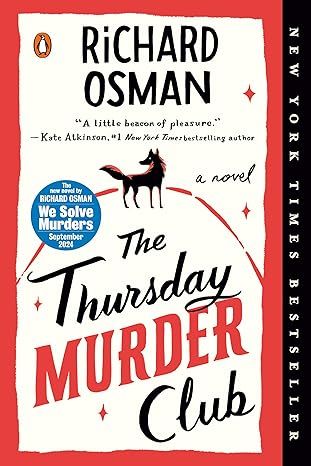
The Thursday Murder Club: A Novel (A Thursday Murder Club Mystery)
4.3
-
155,575
$6.33

Sapiens: A Brief History of Humankind
4.6
-
140,302
$13.49

The Butterfly Garden (The Collector, 1)
4.3
-
88,556
$9.59
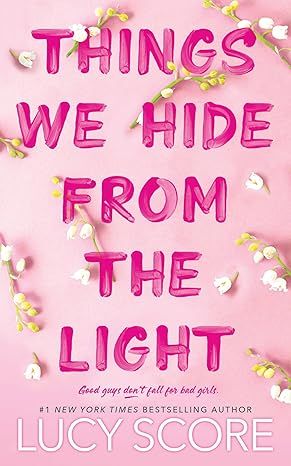
Things We Hide from the Light (Knockemout Series, 2)
4.4
-
94,890
$11.66
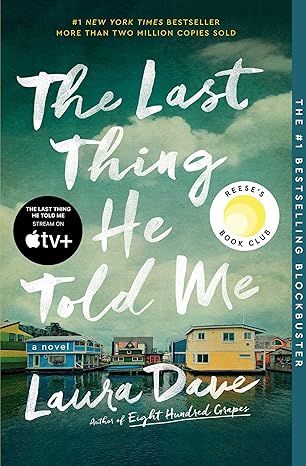
The Last Thing He Told Me: A Novel
4.3
-
154,085
$2.99
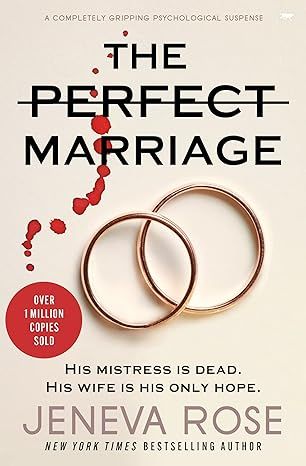
The Perfect Marriage: A Completely Gripping Psychological Suspense
4.3
-
143,196
$9.47

The Coworker
4.1
-
80,003
$13.48

First Lie Wins: A Novel (Random House Large Print)
4.3
-
54,062
$14.99
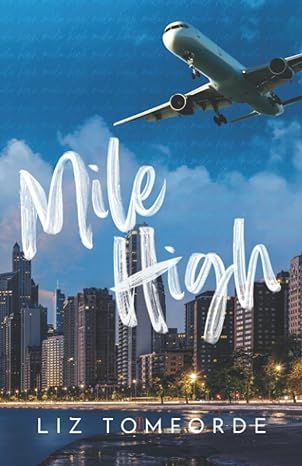
Mile High (Windy City Series Book 1)
4.4
-
59,745
$16.19

Layla
4.2
-
107,613
$8.99

The Locked Door
4.4
-
94,673
$8.53
